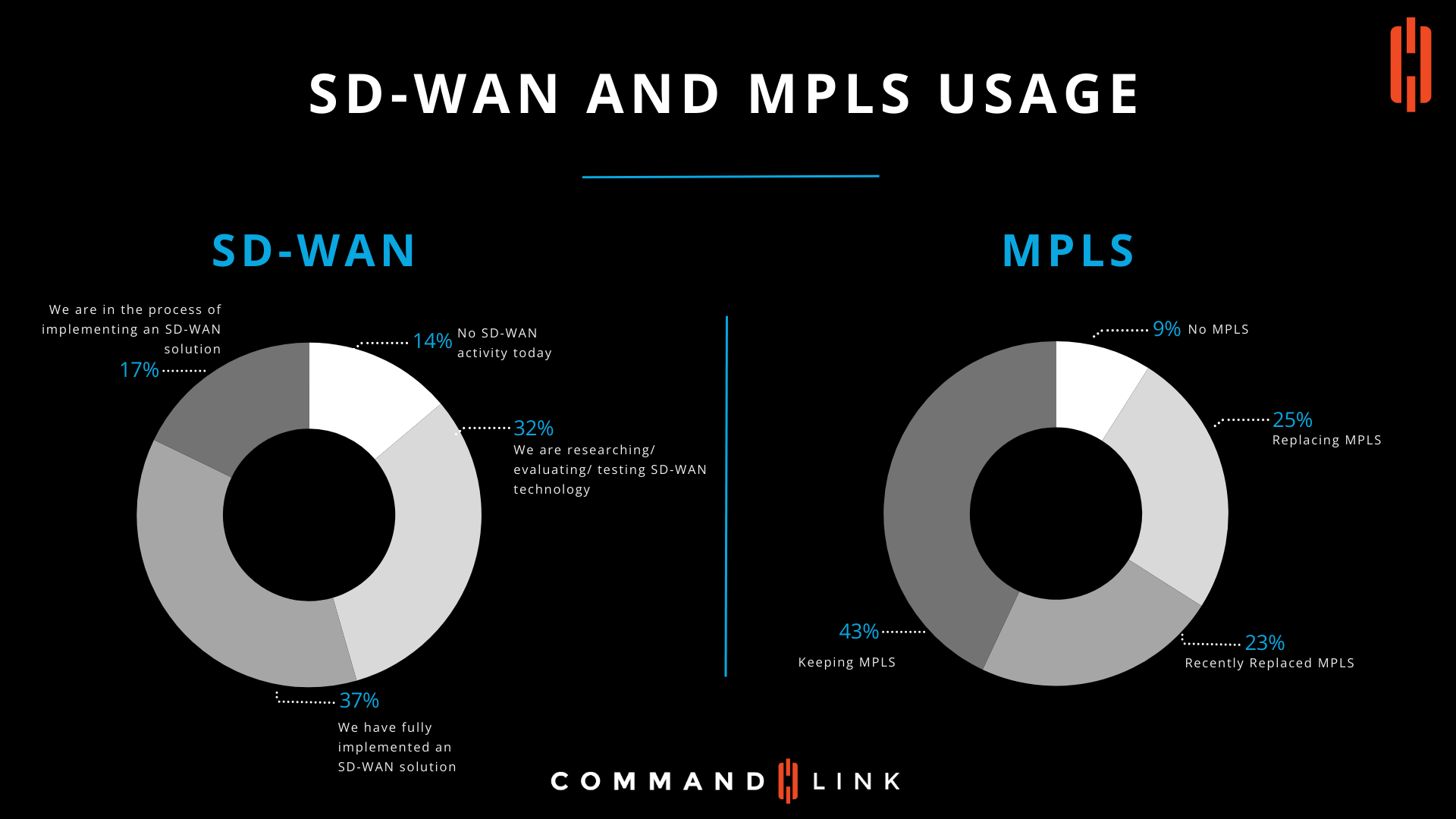Platform
Platform
Everything you need to run a secure global network—in a single system.
Solutions
Solutions
Learn how our solutions were designed to help you scale your IT resources
Company
CommandLink
Let's talk about how we can help you!
Partners

How Are Organizations Adopting SD-WAN and MPLS Technologies?
In today’s dynamic networking environment, organizations are increasingly evaluating their options for managing and optimizing wide-area networks (WANs). Two prominent technologies in this space are Software-Defined Wide Area Networking (SD-WAN) and Multiprotocol Label Switching (MPLS). This article explores current trends in the adoption and use of these technologies, as illustrated by the latest industry data.
What is the Current State of SD-WAN Adoption?
SD-WAN is rapidly becoming a critical component in modern network architecture. According to the data:
These statistics suggest that while SD-WAN adoption is well underway, there remains a significant portion of the market that has yet to embrace this transformative technology fully.
How Are Organizations Managing MPLS in the Era of SD-WAN?
MPLS, a long-established technology for ensuring reliable and secure network connections, continues to play a role in enterprise networks. The data indicates:
These trends illustrate that while MPLS remains relevant, the momentum is clearly shifting towards SD-WAN and other agile networking technologies.
What Does This Mean for the Future of Network Management?
As the data shows, the transition from MPLS to SD-WAN is gaining pace, driven by the need for networks that are more flexible, cost-effective, and better suited to handle the demands of cloud computing and remote work. Organizations that have yet to consider SD-WAN or modernize their network infrastructure may find themselves at a competitive disadvantage as the digital landscape continues to evolve.
For businesses looking to stay ahead, understanding these trends and actively planning for a future where SD-WAN and related technologies play a central role in network strategy will be crucial.